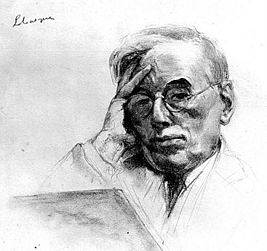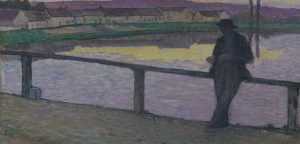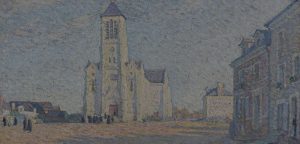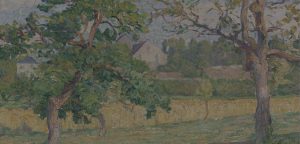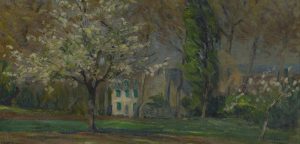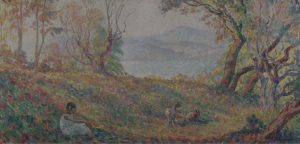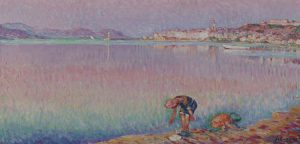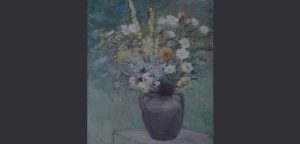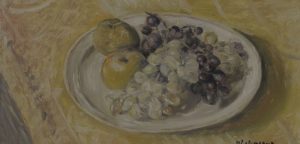Henri Lebasque was born on the 25th of September in 1865 in Champigné, Maine-et-Loire, France.
1865 - 1937
Henri Lebasque
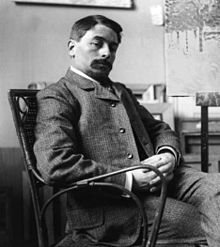
description
A French painter and master of monumental paintings, who worked in several art styles.
Lebasque is known as “the artist of joy and light” for his lyrical canvas full of harmony. He belonged to the circle of Henri Matisse and founded with him the independent Autumn Salon, which exhibited the works of the most progressive artists and sculptors. Henri Lebasque exhibited his works along with Fauvists at the famous Autumn Salon in 1905, where their work was called rampant and “wild” because of the defiantly bright colors. The artist created a large number of landscapes, portraits, scenes in the interior with nudity. The internal design of the Parisian theater on the Champs Elysees and transatlantic liners also belong to the brush of Henri Lebasque.
Key ideas:
– Having begun his creative career as an Impressionist, Henri Lebasque pays much attention to the light in his canvases. He depicts a special sunny world, impregnated with tranquility and harmony. The artist paints portraits of his family, juicy still lifes and romantic landscapes, often works with nudity, depicting a woman with special tenderness and devotion. All that is close to the artist and loved by him, finds a live display in his canvases.
– Open to all new and unusual, Henri Lebasque is not afraid to experiment with color, light and form in his works. He studies the theory of color of Georges Seurat and is fond of pointillism, becomes friends with the Fauves, which helps him discover a rich palette and all the variety of colors. At the same time, the artist preserves the joy and charm of Impressionism in his canvases, making his paintings recognizable and easy to perceive.
– In 1905, together with H. Matisse and a group of Fauvists, he discovered the beauty of the nature of Southern France and created his paintings here. The theme of the sun and the south turned out to be so close to the artist that even after subsequent trips to the north, to Normandy and Brittany, it dominated the works of the painter. During the time spent in the south, radical changes happen in the painting of Lebasque: his artistic palette is enriched, and he finally accepts the concept of Fauvism, although the themes of the artist’s paintings remain joyful and positive.
– The creativity of Henri Lebasque organically merged into the contemporary artistic process. His paintings are a true example of the use of various innovative trends in painting and their creative rethinking.
1865
1886
1893
1897
1903
1905
1906
1907 - 1909
1924
1937
The birth of the artist
Started taking part in the exhibitions of the Salon of Independent
After receiving his education at the Art School in Angers, he moved to Paris and entered the studio of famous portrait painter Leon Bonn. Started taking part in the exhibitions of the Salon of Independent.
Pointillism
Met Maximilien Luce and Paul Signac, got carried away by the technique of pointillism, studied the theory of color.
The first personal exhibition of Lebasque
The first personal exhibition of Lebasque took place at the gallery of Georges Petit.
Together with Henri Matisse and other artists founded the Autumn Salon
Together with Henri Matisse and other artists founded the Autumn Salon.
Participated in the famous Autumn Salon
Participated in the famous Autumn Salon, where the Fauves first announced themselves as an art movement.
Worked in the South of France
Worked in the South of France, together with Henri Manguin and other artists. The artist’s style underwent significant changes, which were caused by the special influence that the south had on him.
Lived in the town of Lani
Lived in the town of Lani, created mainly landscapes and members of his family. In the following years, he traveled a lot. The artist visited Normandy, Brittany and Vendee. Also, went to Saint-Tropez, Saint-Maxim, Nice and Cannes.
Settled in Le Cannet on the Cote d'Azur
Settled in Le Cannet on the Cote d’Azur, near his friend Bonnard.
The death of the artist
He was born on the 7th of August in 1937 in Le Cannet, Alpes-Maritimes, France.

